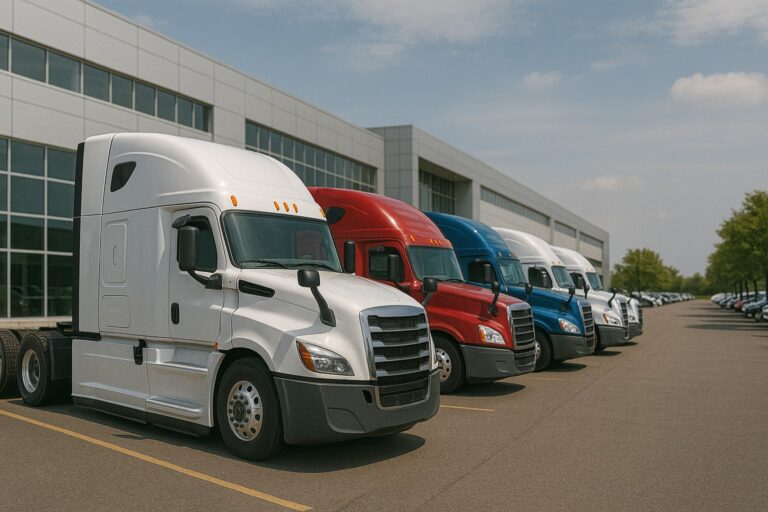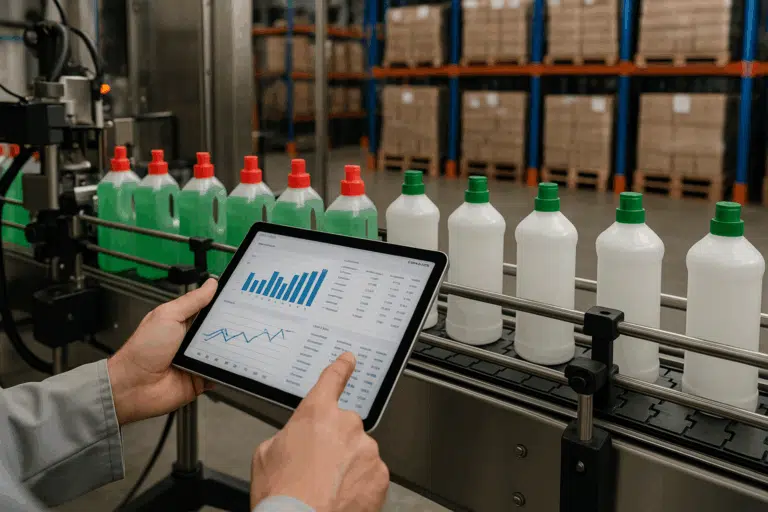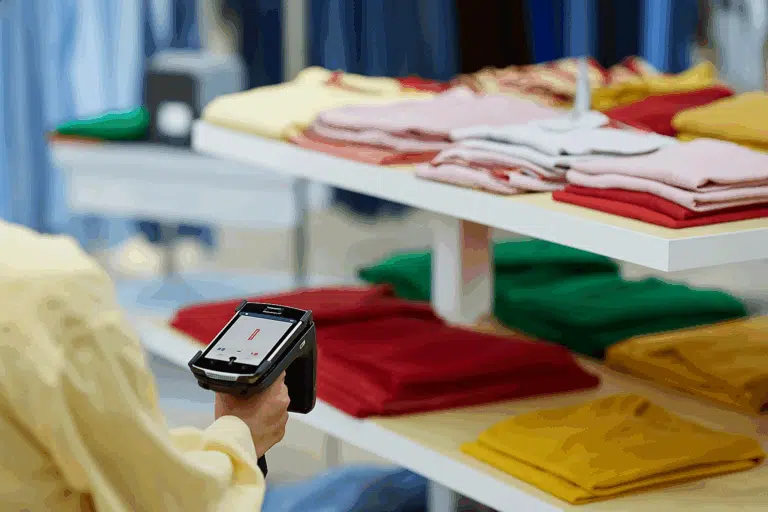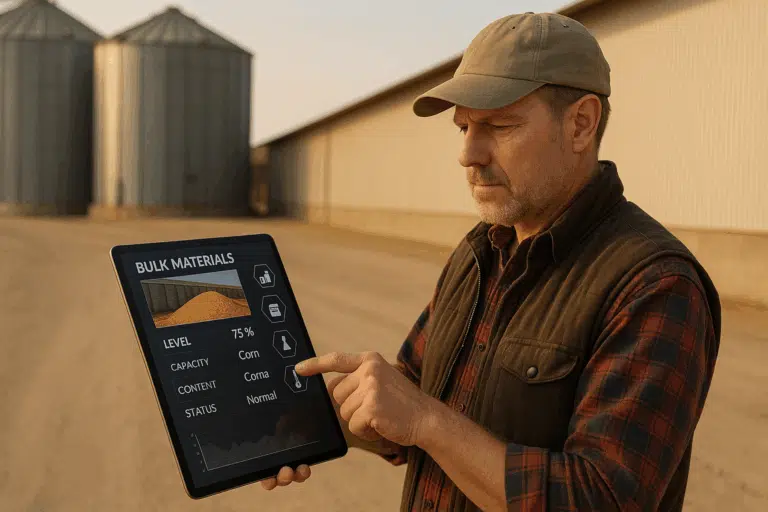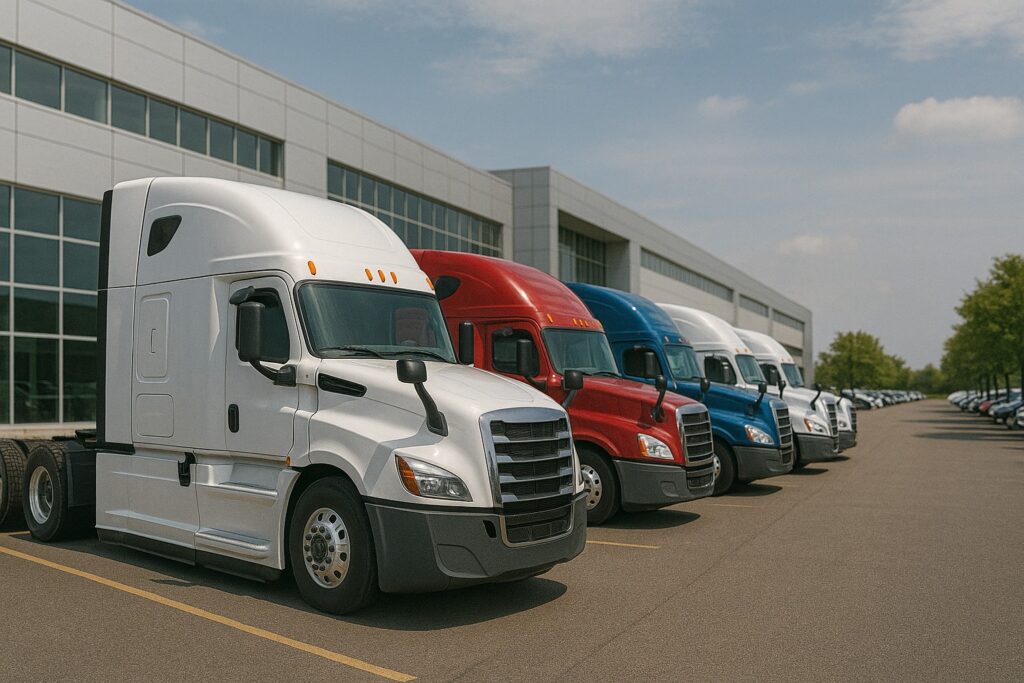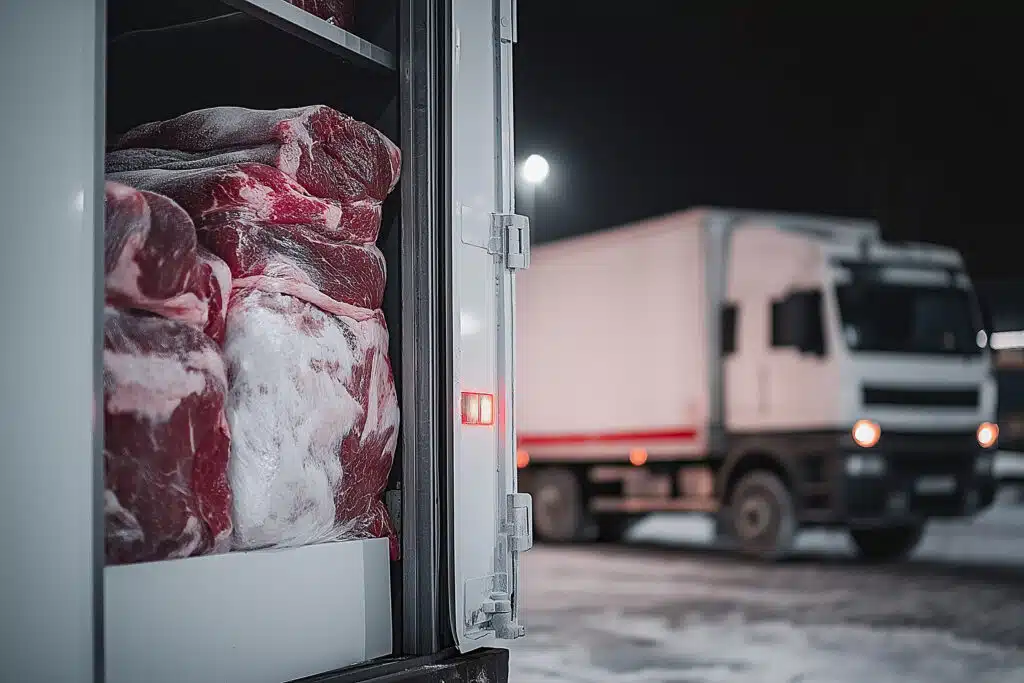The UHF RFID clothing hang tag market was worth USD 5.24 billion in 2023. It’s expected to grow to USD 15.79 billion by 2032, at a strong CAGR of 13.04%
Uhf Rfid Clothing Hang Tag Market Size, Share, Industry Trends, Forecast 2032 | WiseGuyReports. This growth is thanks to more retailers using RFID technology for tracking, managing inventory, and improving supply chains.
At The CPCON Group, we’ve seen how RFID changes the game in the apparel industry. With over 25 years of experience, we offer deep insights into the UHF RFID clothing hang tag market. We’re ready to share our knowledge on its growth potential.
More retailers want to track their inventory in real-time. The rise of online shopping and RFID use in fashion are boosting the market.
Table of Contents
ToggleKey Takeaways
- The UHF RFID clothing hang tag market is set to grow fast, with a CAGR of 13.04% from 2024 to 2032.
- More retailers are using RFID technology, which is driving the market’s growth.
- Tracking inventory in real-time, selling across channels, and RFID in fashion are key to the market’s growth.
- The CPCON Group’s deep knowledge in RFID inventory management makes us a great source for market insights.
- Contact one of our experts to see how UHF RFID clothing hang tags can change your inventory and tracking.
Introduction to UHF RFID Clothing Hang Tag Market

The CPCON Group has led the UHF RFID clothing hang tag market for over 25 years. We’ve made big strides in using radio frequency identification for managing inventory and tracking assets. As the fashion world changes, the need for tracking individual items and tracing garments has grown. UHF RFID tags are now key in solving these problems, making the supply chain more efficient and accurate.
Definition of UHF RFID Clothing Hang Tags
UHF RFID clothing hang tags are made just for the fashion industry. They work in the ultra-high frequency range, from 860 to 960 MHz. These tags are small, fitting easily on most labels, thanks to smaller antennas like the GB3, which measures 1.18×1.96 inches.
These tags work well on many fabrics. The GB3 tags are strong and work on different materials, making them useful for all kinds of clothes. This means they can be used on everything from soft fabrics to thick outerwear.
Importance of UHF RFID Technology in Apparel Industry
UHF RFID technology is becoming more popular in fashion for better inventory management and supply chain visibility. Walmart started using RFID in 2020, making it a big deal in the clothing tag market. Using RFID tags helps Walmart keep track of products and restock faster.
UHF RFID tags help track individual clothes, giving retailers and makers real-time info on inventory and sales. They can read lots of tags quickly, making retail operations smoother. These tags can be read from up to 40ft away, making them easy to use without needing to be right next to them.
UHF RFID tags are crucial in fighting against fake products and improving customer experiences. They let brands keep track of clothes from making to selling, reducing fake goods and protecting their reputation. They also make shopping better with smart fitting rooms and personalized advice.
Market Overview and Size

The CPCON Group keeps a close eye on the UHF RFID clothing hang tag market’s growth. We lead in using RFID for managing inventory. The market was worth US$ million in 2023 and will hit US$ million by 2030, growing at a % CAGR. It started at 2.23 (USD Billion) in 2023.
Current Market Size and Value
Recent studies show the global UHF RFID Clothing Hang Tag market will reach US$ million by 2030, up from 2023. The market’s value by application is also set to jump between 2023 and 2030. These numbers show the huge growth potential of the uhf rfid clothing hang tag market. It’s driven by more use of RFID in the apparel industry.
Projected Market Growth and CAGR
The UHF RFID clothing hang tag market is set for strong growth. It will grow from 2.46 (USD Billion) in 2024 to 5.4 (USD Billion) by 2032, with a 10.36% CAGR.
| Metric | Value |
|---|---|
| Global Market Size (2024) | 2.46 USD Billion |
| Global Market Size (2032) | 5.4 USD Billion |
| CAGR (2024-2032) | 10.36% |
The table shows the UHF RFID Clothing Hang Tag production value by region for 2019, 2023, and 2030. It highlights big growth in all major regions. North America and Europe lead in market value.
As the UHF RFID clothing hang tag market grows, companies like The CPCON Group are ready to help. We offer innovative solutions for the apparel industry. Key Market Drivers and Trends
The UHF RFID clothing hang tag market is growing fast. This is thanks to key drivers and trends. Retailers see the value in better inventory management. So, they’re using RFID technology more in their stores. Using UHF RFID hang tags helps businesses manage their supply chains better. It cuts down on shrinkage and makes stock easier to see. This is why RFID tech is becoming more popular in the clothing industry. Retailers want better ways to manage their inventory. They’re looking for solutions to make their supply chains more efficient and save money. UHF RFID hang tags give them real-time stock updates. This helps them make smart choices and work better. These tags come in different types like paper, PET, and PP. Each type meets different industry needs. Smart clothing and wearables are getting more popular. This is because people want tech in their lives and personalized shopping experiences. UHF RFID hang tags make smart clothes and wearables work better with the Internet of Things (IoT). This adds new features and makes customers happier. RFID is used in many areas, like fashion, retail, beauty, groceries, and cars. It shows how versatile and useful this tech is. Government rules and green efforts are pushing UHF RFID use. People care more about the planet, so stores need to be more eco-friendly. RFID helps recyclers by keeping track of what a piece of clothing is made of. Rules in the EU, like digital product passports and more responsibility for producers, will affect the industry. These changes will make RFID tags more popular. This will help the UHF RFID clothing hang tag market grow even more. The UHF RFID clothing hang tag market is always changing. It’s important for businesses to keep up with new trends and tech. At CPCON, we’ve been in the RFID business for over 25 years. Our experts can help you use UHF RFID to improve your inventory and support your green goals. Contact us to learn how we can help your business. In the fast-changing uhf rfid clothing hang tag market, knowing about tag types is key. At The CPCON Group, we’ve watched how the market changes. We help businesses in many fields understand these changes. The UHF RFID clothing hang tag market has four main types: hard tags, soft tags, printable tags, and textile tags. Each type has its own strengths for different uses. They vary in how long they last, how flexible they are, and how well they work with different materials. Hard tags are the top choice, making up 35% of the market in 2024, worth USD 1.54 billion. They’re strong and can handle tough conditions. This makes them ideal for industries where things get rough. Soft tags are also popular, with a 28.5% share. They’re light and bendy, making them great for retail and healthcare. The rise of RFID in these fields has boosted their use. Printable tags are set to grow, aiming for a 21.5% share in 2024. This is because more people want unique and branded items. These tags let businesses add custom designs and info, making them a hit for many uses. Textile tags, woven into fabrics, made up 15% of the market in 2024. The textile and apparel industry’s use of RFID has helped them grow. These tags blend RFID tech into clothes, helping with inventory, checking products, and engaging customers. The CPCON Group leads in RFID technology for managing inventories. We know the best tag type for each business need. Our knowledge in the uhf rfid clothing hang tag market helps businesses pick the right tags. This ensures they work well and save money. The uhf rfid clothing hang tag market is split into two main types: ultra-high frequency (UHF) and high frequency (HF). The CPCON Group leads in RFID solutions for managing inventory and tracking assets. They see more people using both UHF and HF tags in retail and fashion. UHF RFID tags will likely be the top choice in the global RFID apparel hang tag market from 2023 to 2032. In 2023, the UHF RFID clothing hang tag market was worth USD xx.x billion. It’s expected to grow to USD xx.x billion by 2031, with a growth rate of xx.x% from 2024 to 2031. UHF tags are great for managing inventory and supply chains because they have a long read range, fast data transfer, and are less expensive than HF tags. Even though UHF tags are leading, HF tags are still important in the uhf rfid clothing hang tag market. HF tags are smaller and more flexible, perfect for places where space is tight. They use ISO/IEC 18000-6C and EPC Gen2 protocols, which are key in retail, fashion, inventory management, and tracking assets. The RFID Hang Tag Market, including both UHF and HF tags, is set to grow from USD xx Million in 2024 to USD xx Million by 2032. The CPCON Group is a leader in RFID technology for managing inventory. They know picking the right frequency is key for the best performance and cost savings. Want to know how our RFID solutions can make your inventory management better and boost your efficiency? Contact one of our experts today. At CPCON Group, we know how important it is to use the latest tech in the apparel industry. The UHF RFID clothing hang tag market has changed how retailers and makers work. It helps with managing stock, stopping theft, and engaging with customers. Managing stock is a big deal in the UHF RFID clothing hang tag market. It lets retailers keep track of what they have in real-time. This helps them keep the right amount of stock. Smart hangtags help companies avoid running out of items and work better. The apparel industry is really promising for using item-level tags. Stopping theft is another big use of UHF RFID in clothes. Anti-theft tags help keep an eye on valuable items. This stops theft and cuts down on losses. These tags can handle tough conditions, like high heat and industrial washing. They’re perfect for tracking clothes. UHF RFID hangtags are also great for making shopping better for customers. They give quick info and suggestions, helping stores sell more and make customers happier. They also make checking out faster and keep inventory up to date. We at CPCON Group are leaders in using RFID for managing assets and tracking inventory. We’ve seen how the UHF RFID clothing hang tag market changes things. It helps stores and makers work better, save money, and make customers happier. The UHF RFID clothing hang tag market is growing in different parts of the world. North America, Europe, Asia Pacific, and the Rest of the World are all showing interest in this technology. At The CPCON Group, we’ve studied these trends closely. We aim to give you insights into the market. North America is a big market for UHF RFID clothing hang tags. It has many big retailers and focuses on making supply chains better. The U.S. is leading in using RFID technology here. The market is expected to grow a lot in the next few years. It’s expected to grow at a CAGR of XX% from 2019 to 2030. By 2030, it will reach XX K Units. Europe is also important for UHF RFID clothing hang tags. Countries like Germany, the UK, and France are using RFID technology a lot in retail. The production value is set to hit US$ XX Million by 2030, up from US$ XX Million in 2019. Europe’s share in the global market is expected to be XX% by 2024. The Asia Pacific region is expected to grow the most in the UHF RFID clothing hang tag market. Countries like China, Japan, and South Korea are adopting RFID technology fast. This is to improve inventory management and make supply chains smoother. The consumption is expected to grow at an impressive CAGR of XX% from 2019 to 2030. It will reach XX K Units by 2030. The Rest of the World includes Latin America, the Middle East, and Africa. These regions are also seeing a lot of growth in the UHF RFID clothing hang tag market. People are learning about the benefits of RFID technology. This is driving its use for better inventory management. At The CPCON Group, we know a lot about the UHF RFID clothing hang tag market in different places. Our skills in managing assets and controlling inventory, along with our RFID technology experience, make us great at solving inventory management problems. Contact one of our experts today to see how we can help you use UHF RFID clothing hang tags in your area. The global UHF RFID clothing hang tag market is very competitive. Many companies are fighting for a share of the market. At the CPCON Group, we know how important it is to stay ahead in this fast-changing industry. This market is all about new ideas, working together, and offering top solutions. It meets the changing needs of the clothing industry. Some big names lead the uhf rfid clothing hang tag market. They bring their own special skills and products. Here are some of the main players: These companies lead the way in the uhf rfid clothing hang tag market. They bring new ideas and set the standards. They offer RFID solutions that help with managing inventory, making the supply chain clear, and improving customer experiences. Big brands like Uniqlo, Zara, and Walmart use RFID hang tags for managing their clothes. The top players in the uhf rfid clothing hang tag market have a big share. Avery Dennison is a global leader in RFID technology. It uses its wide knowledge and global reach to stay ahead. Alien Technology is also a big name, known for its new RFID solutions. Checkpoint Systems focuses on keeping stores safe and managing inventory. It has made a big mark in the uhf rfid clothing hang tag market. Zebra Technologies is a pioneer in RFID technology. It offers a wide range of RFID solutions for the clothing industry. Impinj is another key player, known for its advanced RFID platforms and readers. More companies are using Passive UHF RFID Garment Hang Tags in retail. This includes garments, footwear, accessories, and homewares. These tags make checking items faster and cheaper for clothing companies. Last year, spending on UHF RFID in retail was $91.5 million. It’s expected to go over $1 billion by 2007. At the CPCON Group, we keep a close eye on the uhf rfid clothing hang tag market. Our experts are always learning about new trends, tech, and strategies from the big players. As a leading provider, we aim to offer new and tailored solutions. These solutions help our clients stay ahead in the market. If you want to use UHF RFID technology for your clothing hang tags, our experts at the CPCON Group can help. Contact us today to see how we can help you stand out in the competitive uhf rfid clothing hang tag market. The uhf rfid clothing hang tag market is seeing big changes. At CPCON Group, we lead these changes with our RFID tech. We’re making big steps in how we manage inventory and improve customer experiences. Now, UHF RFID hang tags have sensors and beacons. These tags track products in real-time. This has led to a 10% sales boost for retailers. Also, inventory accuracy has jumped from 65-70% to almost 100%. UHF RFID tech is getting better at tracking items. It’s faster and more accurate. This helps track clothes from making to the store shelves. Avery Dennison bought TexTrace, a company making custom RFID labels for fashion. This move aims to make RFID tags a standard in the fashion world. Item-level tagging is a big deal in the uhf rfid clothing hang tag market. It means each item gets its own ID. This has led to better inventory tracking and sales growth for retailers. It also cut theft by 15%, making stores more profitable. Dual-frequency tags are changing the game. They mix NFC and UHF RFID. This lets tags protect privacy and reactivate with a password. It opens new ways for brands to connect with customers. The uhf rfid clothing hang tag market is growing fast. We expect to see tags that last through many washes. This supports recycling and renting clothes, which is good for the planet. At CPCON Group, we’re excited about the future of the uhf rfid clothing hang tag market. We know a lot about RFID tech and want to help businesses use it. By using RFID, retailers can make shopping better for customers and run more smoothly. As RFID use grows, we’ll lead in making standards for tracking clothes. Our experts can help you add UHF RFID to your business. This brings real-time inventory updates and better customer experiences. Contact us to stay ahead in the uhf rfid clothing hang tag market. As a top provider of RFID solutions for the UHF RFID clothing hang tag market, CPCON Group sees both challenges and chances. UHF RFID hang tags help with managing inventory, stopping theft, and engaging customers. But, there are issues that need solving for the technology to be widely used and successful. Privacy and security are big hurdles for UHF RFID clothing hang tags. This tech can collect and store personal data, making people worry about how it’s used and kept safe. Companies must focus on keeping data secure and being open to gain customer trust. Also, the spot where the IC and antenna meet on RFID tags is weak. It can break easily, making the tag work less well. It’s key to pick RFID tags that can handle the retail world’s demands. Getting UHF RFID to work with current systems is tough. Retailers need their RFID to fit smoothly with what they already have to work well and not cause problems. This might mean spending on new software and hardware, and training staff. But, the payoff is big if it works. For example, American Apparel saved a lot of time and reduced stockouts with RFID in some stores. Overcoming integration issues lets retailers fully use UHF RFID’s power. The UHF RFID clothing hang tag market is growing fast, especially in new markets. The Asia Pacific is seeing a big rise in RFID use thanks to a growing retail sector and the need for better inventory management. RFID in the supply chain has grown a lot, from $1 billion in 2003 to $20 billion in 2013. This growth is likely to keep going as more stores see the perks of RFID, like better inventory, less labor, and happier customers. At CPCON Group, we’re here to help our clients tackle the challenges and grab the chances in the UHF RFID clothing hang tag market. With our know-how and new solutions, we can help you get the most from RFID tech and stay ahead. Reach out to one of our experts today to see how we can help with your RFID project. We at The CPCON Group are excited about the future of UHF RFID clothing hang tags. With over 25 years of experience, we’ve seen how these tags change the apparel industry. They make managing inventory and tracking items easier. The UHF RFID clothing hang tag market is growing fast. More stores are using RFID technology. This means they need better ways to manage their inventory and see their supply chains clearly. Experts say the number of RFID tags will jump by 20.4% each year, reaching 115 billion by 2028. About half of all RFID sales come from the retail sector. Already, RFID tags are on about 20% of all apparel items. This shows there’s a lot of room for growth as more stores see the value in RFID. New tech like IoT and AI will make RFID tags even better. They will track items in real-time and help make smarter decisions. This will open up new uses in the apparel industry. RFID technology has big potential worldwide. As companies focus on being more sustainable and efficient, RFID will be key. It helps cut down on waste and reduce carbon emissions. North America and Europe will keep leading the UHF RFID market. But Asia Pacific will grow the fastest. This shows how RFID is used all over the world. At The CPCON Group, we’re all about helping businesses use RFID to improve. Our expertise and new solutions make us ready for the growing demand in the apparel industry. If you want to get ahead in inventory management, contact us. Let us show you how RFID can help your business grow. We at The CPCON Group have been leading the way in using RFID for managing inventory. For over 25 years, we’ve seen how UHF RFID clothing hang tags change the game for the apparel industry. They make managing inventory and tracking items much better. The UHF RFID clothing hang tag market has many players. Each one is key to bringing new solutions to users and customers. Let’s look at the main players: Raw material suppliers start the chain. They give the parts needed for making UHF RFID hang tags, like RFID chips and antennas. The quality of these parts affects how well the final product works. Manufacturers make the UHF RFID hang tags. They use the latest tech to meet the needs of the fashion industry. For example, the Impinj Monza R6-P RFID hang tag is great for clothes. It reads far, writes fast, and sends data reliably. Distributors and resellers connect manufacturers with buyers. They make sure UHF RFID clothing hang tags are easy to get. They also offer extra services like custom options and help with technical problems. Retailers, fashion brands, and logistics companies use UHF RFID tags. They make managing stock better, cut down on theft, and improve how they talk to customers. Big names like Zara and Uniqlo use RFID for tracking and sales data. RFID labels make managing stock better, cut down on stock issues, and increase how often stock is sold. They also help stop theft and fake products with unique codes. RFID tech is contactless, reads fast, and can read many labels at once, unlike old barcodes. At the NRF Show in January 2010, more retailers got interested in RFID. Wal-Mart’s push for RFID got suppliers moving. Now, mobile readers are more popular than fixed ones. The RFID apparel market could be worth $800M, with mid-tier stores joining in 2011. Better inventory management means more cash flow, making RFID more appealing. This has led to better stock turns, from 3.3x in early 2002 to 4.1x in late 2009. At The CPCON Group, we lead in the UHF RFID clothing hang tag market. We work with all parts of the supply chain to bring top solutions. If you want to improve your inventory management, contact us to see how UHF RFID can help you. We at The CPCON Group see the uhf rfid clothing hang tag market growing fast. UHF RFID hang tags, like the Impinj Monza® R6-P, make tracking clothes easy and accurate. Big brands like Levi’s use RFID on 50 million items in the US, making their inventory over 98% accurate. UHF RFID hang tags do more than just track items. They help stop theft and fake products, keeping your brand safe. They also make stores work better, cutting down inventory time to 20 minutes. This saves money and lets stores focus on making customers happy. The uhf rfid clothing hang tag market is getting bigger because of market growth and more rfid adoption. We expect more demand for contactless monitoring, better inventory management, and clearer supply chain visibility. The CPCON Group is ready to help your business grow with our RFID solutions. Contact an expert today to see how our technology can change your business for the better. In 2023, the UHF RFID clothing hang tag market was worth USD 5.24 billion. It’s expected to grow to USD 15.79 billion by 2032. This growth will be at a CAGR of 13.04%. The market is growing because of the need for better inventory management in retail. Also, smart clothing and wearables are becoming more popular. Plus, government rules are pushing for more transparent and sustainable supply chains. North America and Europe are leading the UHF RFID clothing hang tag market. The Asia Pacific region is expected to grow the fastest during this time. UHF RFID clothing hang tags are used for inventory management, preventing theft, and engaging customers. They make tracking items in real-time possible. They also help with automated checkouts and make shopping more personalized. Major players in the UHF RFID clothing hang tag market include Avery Dennison, Alien Technology, Checkpoint Systems, Zebra Technologies, Impinj, Smartrac, SML Group, and HID Global Corporation. The market faces issues like privacy and security concerns over data collection and storage. It also needs to work well with current inventory and supply chain systems. The future looks bright with tech like IoT and AI joining forces with RFID. Improvements in read range, accuracy, and speed of UHF RFID systems are also on the horizon. Plus, advanced UHF RFID tags with sensors and beacons are being developed.Rising Demand for Enhanced Inventory Management
Growing Adoption of Smart Clothing and Wearables
Government Regulations and Sustainability Initiatives
Market Segmentation by Tag Type
Tag Type Market Share (2024) Key Characteristics Hard Tags 35% Durable, great for industrial and manufacturing Soft Tags 28.5% Flexible, light, perfect for retail and healthcare Printable Tags 21.5% Customizable, growing in demand for personal touch Textile Tags 15% Can be woven into fabric, used in textiles and clothes Market Segmentation by Frequency
UHF (Ultra High Frequency) Tags
HF (High Frequency) Tags
Market Segmentation by Application
Inventory Management
Theft Prevention
Customer Engagement
Application Benefits Inventory Management Real-time tracking, optimized stock levels, reduced stockouts Theft Prevention Deterrence of theft, reduced losses, durable anti-theft tags Customer Engagement Personalized experiences, instant product information, automated checkout Regional Market Analysis
North America
Europe
Asia Pacific
Rest of the World
Competitive Landscape
Key Players in the Market
Market Share Analysis
Product Innovations and Technological Advancements
Challenges and Opportunities
Privacy and Security Concerns
Integration with Existing Systems
Emerging Markets and Untapped Potential
Future Outlook and Projections
Region Projected Market Share North America 35% Europe 30% Asia Pacific 25% Rest of the World 10% UHF RFID Clothing Hang Tag Market Supply Chain Analysis
Raw Material Suppliers
Manufacturers and Distributors
End-Users and Customers
Conclusion
FAQ
What is the current size and value of the UHF RFID clothing hang tag market?
What are the key drivers of growth in the UHF RFID clothing hang tag market?
Which regions are expected to dominate the UHF RFID clothing hang tag market?
What are the major applications of UHF RFID clothing hang tags?
Who are the key players in the UHF RFID clothing hang tag market?
What are the challenges faced by the UHF RFID clothing hang tag market?
What technological advancements are shaping the future of the UHF RFID clothing hang tag market?
Source Links





